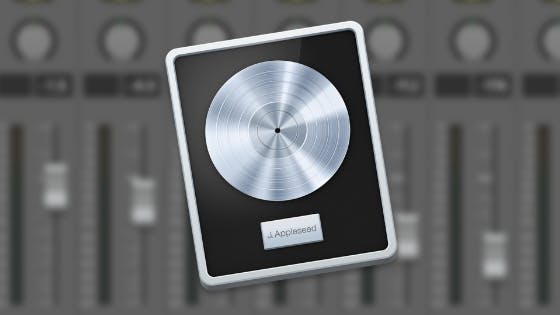
How To Properly Do Gain Staging in Logic Pro X
This article serves to help you understand the concept of gain staging and how to apply it when mixing in Logic Pro X.
What is gain staging?
Gain staging is level management.
It comes from the analogue days where it was essential to get a good signal-to-noise ratio whilst preventing clipping distortion. More info on that.
Of course, many like the sound of clipping analogue gear but that's a whole other thing!
Gain staging was also needed to make sure that the level going into each hardware unit was optimal.
It's less important when working in a DAW, but it's still very good practice especially if the plug-ins you use model the properties of analogue gear.
You can also download a FREE PDF version of this guide so you always have it to hand!
Pre-Fader Metering
Using pre-fader metering in Logic Pro X is essential to practice gain staging.
With pre-fader metering on, the levels indicated in Logic's mixer are pre-fader, meaning the levels are what they were before being adjusted by the fader.
The fader is in itself a gain stage.
However, if we remain in post-fader mode (default), we may be unaware of how hot those levels were before the fader adjusted them.
For example, if the level shows -10 dBFS, but our fader is at -10dB, that means the level before fader is at 0dBFS, which could be giving the plugins we use on that channel a very hard time.
This is especially true if any of them are dynamics processors such as a compressor.
This is why it's essential to practice proper gain-staging well before we enter the actual mix phase and certainly before we use any compression.
Consider it housekeeping.
How To Gain Stage
So with pre-fader metering on, we know the level of the tracks even with the fader all the way down. From here we can do some simple pre-mix housekeeping.
Now, Logic's meters are peak meters as opposed to RMS, so I recommend that you make sure all of your levels are in the green zone roughly -12dBFS or below.
Gain Staging Software Instruments
Like most things in audio, it's best to fix the issue at source. As early in the signal flow as possible.
When it comes to software instrument tracks, I advise using the volume control of the software instrument/synth itself to get the meter into the green zone.
Otherwise, you're free to use a gain utility at the top (beginning) of your plugin chain.
Gain Staging Audio Tracks
Attaining the ideal level in your audio tracks is as easy as using the clip-gain feature in the region inspector.
I would play the track through, get a rough idea of the level at which it is peaking, and simply apply the maths to the gain control in the inspector with all of the regions on that track selected. See below.

Now it's too quiet!
This is where you will need to adjust your monitoring.
It's important that you calibrate your monitoring properly otherwise it's difficult for your ears to know exactly what loud is.
I recommend you look into using the K-System, or for a very quick and easy way to do this, I wrote a blog on how to do this simply using your ears and the Spotify app for Mac.
+ Mastering in Logic Pro X : The Basics
Infinite headroom
Now that you have calibrated your monitoring, it will be near impossible to overcook the mix as anything louder than -10dBFS RMS will be loud to your ears, forcing you to practice decent level management.
Now that -10dBFS RMS feels loud enough, you will always preserve the range above that for peaks and transients.
You'll never overcook your mix again!
The Master Bus
It's possible at this point that you're thinking the mix is a little too quiet.
If so, it's very likely you have some headroom on your master bus.
The solution is as simple as loading a Gain utility (Logic stock plug-in) on the master bus (Stereo Out) and raising the volume of the mix from there.
You should be able to get it loud enough that you can hear it comfortably whilst preventing the channel from clipping.
Reaching the song's loudness potential
At this point, your mix is well balanced and the level on the master bus is close enough to 0dBFS without clipping.
But it's yet to reach it's full loudness potential, right?
At this point, you might be tempted to use some dynamics processing on the master bus to increase perceived loudness.
But before you grab your favourite compressor or limiter, I suggest that you bounce the mix out to 24 bit and do all of this in a separate mastering session.
Give some time between the two sessions so that you can come back to the Mastering stage witrh fresh ears.
Video tutorial
The below video is a tutorial on gain-staging I made some time ago for Logic Pro X.
It covers most of the above.
Happy gain-staging!
This website was brought to you by Songcards
© 2023 Unlock Your Sound Ltd | Privacy Policy